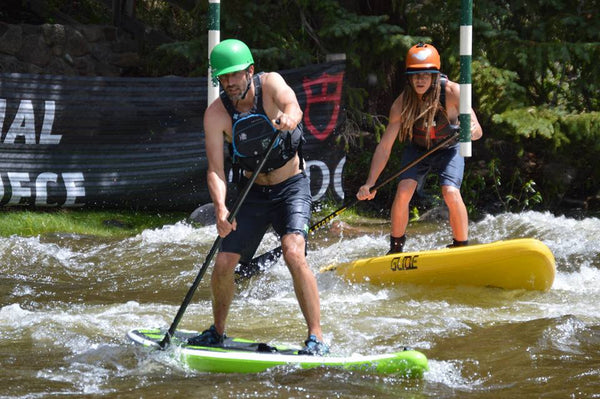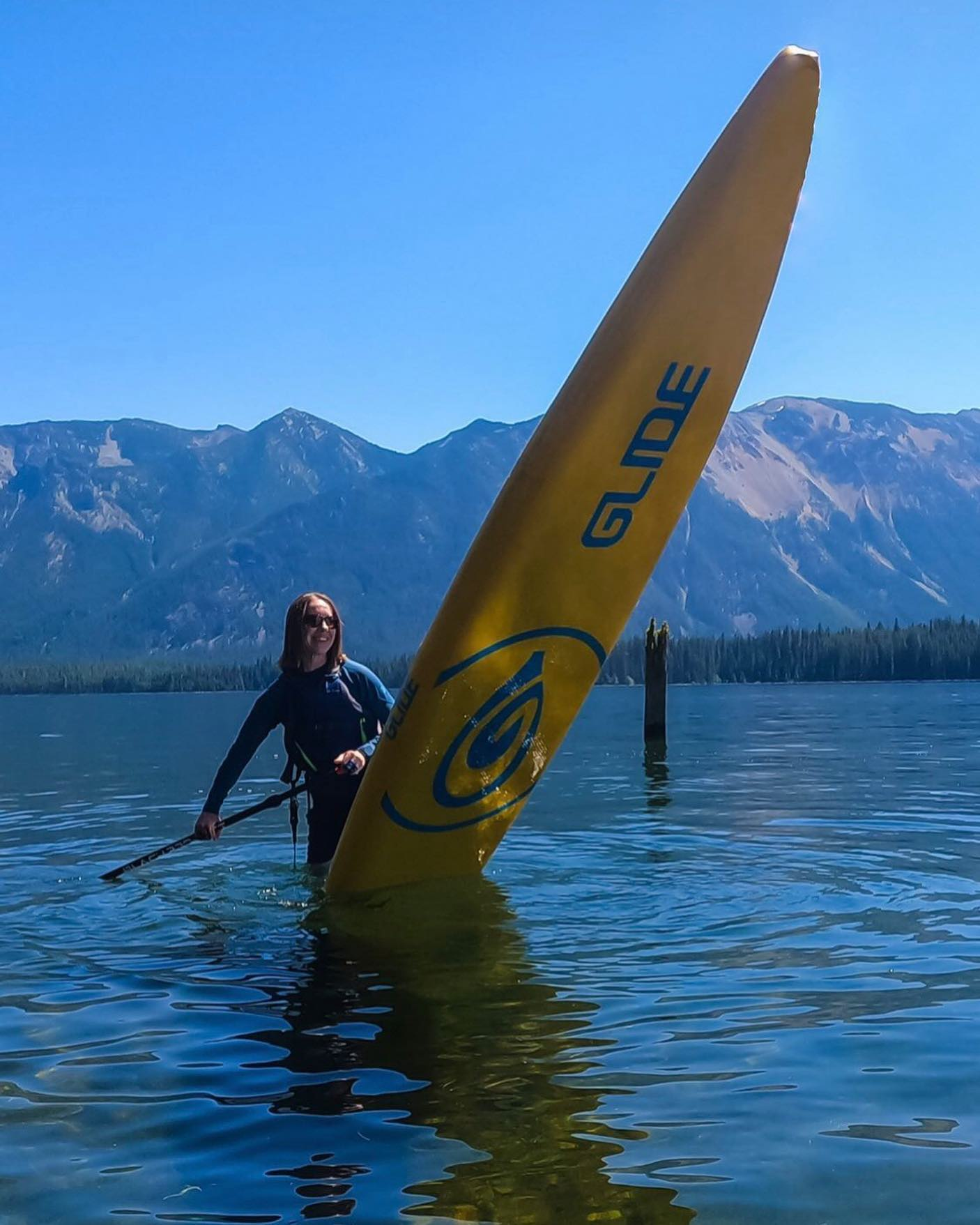
Advanced Stand Up Paddle Boarding Skills to Master
Once you’ve mastered the basics, advanced SUP skills open up a new world. From pivot turns and power strokes to SUP surfing, yoga, and long-distance touring, this guide shows you how to take your paddle boarding to the next level.
Once you’ve learned the basics of balance and paddling, it’s time to take your SUP game to the next level. Advanced skills like pivot turns, cross-bow strokes, and handling chop not only make you more confident but also open the door to racing, touring, surfing, and yoga on the water. This guide walks through the most valuable advanced paddle boarding techniques and how to practice them safely.
Stand up paddle boarding (SUP) is not only a fun, versatile water sport but also an excellent full-body workout. While learning the basics — standing, balancing, and paddling — is the first step, many paddlers quickly outgrow those fundamentals. Once you’re comfortable on calm water, you may find yourself craving a new challenge.
That’s where advanced SUP skills come in. From mastering high-performance paddle strokes to tackling surf, long-distance tours, and even yoga flows, there’s always another level to reach on a paddle board. By refining technique and exploring specialized skills, you’ll not only become more efficient but also open up a world of new experiences on the water.
Here are some advanced SUP skills to help you become a true expert on your board.
Table of contents

Mastering Paddle Techniques on an Inflatable Paddle Board
Power Stroke
The power stroke is a must-have for advanced paddlers who want to maintain speed, fight through wind or current, or generate quick acceleration. Unlike the regular forward stroke, the power stroke extends past your feet, pulling the paddle almost to the tail of the board.
This added length gives you more drive with each stroke, but it also demands balance and core strength. Engage your whole body — legs, core, shoulders — to avoid over-relying on your arms. The key is efficiency: keep your paddle vertical and avoid twisting your body awkwardly.
This technique applies to both inflatable and solid boards, though inflatables may require slightly more attention to balance since they sit higher on the water.
Pivot Turn (Buoy Turn)
The pivot turn — or buoy turn — is essential for advanced paddlers in races or when navigating tight spaces. To execute, step back onto the tail of your board, lifting the nose out of the water, and sweep the paddle in a wide arc to spin quickly.
The challenge lies in staying upright: your weight must be controlled, your knees soft, and your paddle ready to brace if you wobble. Mastering this maneuver not only improves agility but also builds confidence in dynamic situations like surf zones or crowded marinas.
Understanding Your Board and Equipment
Solid Boards vs. Inflatable Boards
Each board type presents unique advantages:
-
Solid Boards (fiberglass/epoxy): Favored by advanced paddlers for speed, rigidity, and responsiveness. Ideal for racing or SUP surfing.
-
Inflatable Boards: Easier to transport and store, more forgiving in falls, and surprisingly stiff when inflated properly. Advanced inflatables now rival many hard boards in performance.
👉 Curious about the differences? Check out our full guide: Inflatable vs. Hard Paddle Boards
.
Utilizing Your Paddle Effectively
Your paddle is more than just propulsion — it’s a third point of contact with the water. Advanced paddlers learn to:
-
Steer with the paddle: Place the blade lightly in the water as a rudder without losing speed.
-
Brace for balance: Plant the paddle in choppy conditions for instant stability.
-
Feather the blade: Rotate it during recovery to reduce wind resistance.
A high-performance paddle (carbon fiber or fiberglass) makes these techniques easier, but skill matters more than gear.
Advanced Balance Techniques
SUP Surfing
One of the most fun advanced stand up paddle board skills to master is SUP surfing takes balance to the next level. The key is transitioning quickly from the standard flatwater stance (feet parallel, shoulder-width apart) to a surf stance (one foot forward, one back) as the wave approaches.
Timing, footwork, and reading the wave are everything. Practice pivot turns and quick step-backs on flat water first to prepare for surf conditions. Start small and work your way up.
👉 Avoiding wipeouts is part of the learning curve. Read more here: Top Mistakes to Avoid When Paddle Boarding
.
Yoga on Your Paddle Board
SUP yoga transforms even simple poses into core-intensive workouts. A basic downward dog or warrior pose becomes a full-body balance challenge when the board shifts under you.
For advanced yogis, inversions and arm balances on a paddle board test focus and stability like nothing else. The reward? Deepened mindfulness, stronger balance, and a truly unique way to merge yoga with nature.
👉 New to SUP yoga? See our guide: Flow on Water: A Complete Guide to Paddleboard Yoga
.
Conquering Distance with Touring Paddle Boards
Long-Distance Paddling
Covering long distances requires more than stamina — it’s about efficiency. Touring boards with displacement hulls slice through the water, but technique makes the real difference.
-
Keep strokes consistent and smooth.
-
Switch paddle sides seamlessly, without breaking rhythm.
-
Engage your core to conserve energy over miles.
Distance paddling is both physical and mental. It challenges endurance, navigation, and planning — making it one of the most rewarding advanced SUP pursuits.
👉 Want to paddle farther and faster? Read: How to Paddleboard Faster
.

Overnight SUP Trips
For the adventurous, overnight SUP expeditions elevate the sport into a lifestyle. This involves strapping camping gear, food, and safety supplies to your board and paddling to a remote site.
Key skills include:
-
Packing efficiently with dry bags and compression straps.
-
Balancing the load evenly to maintain board performance.
-
Understanding water routes, tides, and weather patterns.
-
Being self-sufficient with repair kits, first aid, and safety communication.
It’s less about speed and more about preparation and self-reliance. The reward is unmatched: paddling into a sunset, camping under the stars, and waking up to glassy water ready for day two.
👉 Planning your own trip? Here’s a checklist: What to Bring on a Paddle Boarding Adventure
.

Conclusion: Advanced Stand Up Paddle Boarding Skills to Master
Stand up paddle boarding is a sport without limits. Once you’ve mastered the basics, the advanced skills you develop allow you to personalize your SUP experience — whether that’s racing around buoys, riding ocean waves, flowing through yoga poses, or embarking on multi-day tours.
The secret to progression is equal parts practice, patience, and curiosity. Each new technique not only builds skill but also deepens your connection to the water. Advanced SUP isn’t about perfection — it’s about pushing your boundaries, embracing challenges, and enjoying every new layer the sport reveals.
So whether you’re powering through chop with a refined stroke, executing a flawless pivot turn, or packing your board for an overnight adventure, remember: your paddle board is more than gear — it’s your gateway to endless discovery.
👉 Ready for your next challenge? Explore our Glide Inflatable Paddle Boards
FAQs
When am I ready for advanced paddle board skills?
Once you can paddle comfortably in flat water, turn smoothly, and stay balanced in light wind or small chop, you’re ready to level up.
What advanced skills should I learn first?
The pivot turn (step-back turn) is a great place to start, followed by cross-bow strokes and bracing techniques for stability.
Do I need a different board for advanced SUP skills?
Not necessarily. An all-around board works for most skills, but touring boards, surf SUPs, or race boards are better for specialized techniques.
How long does it take to master advanced paddle boarding?
With regular practice, many paddlers develop advanced skills within one to two seasons.
Are advanced skills useful for non-competitive paddlers?
Yes. Techniques like bracing, edging, and footwork improve control, safety, and efficiency for every paddler.





